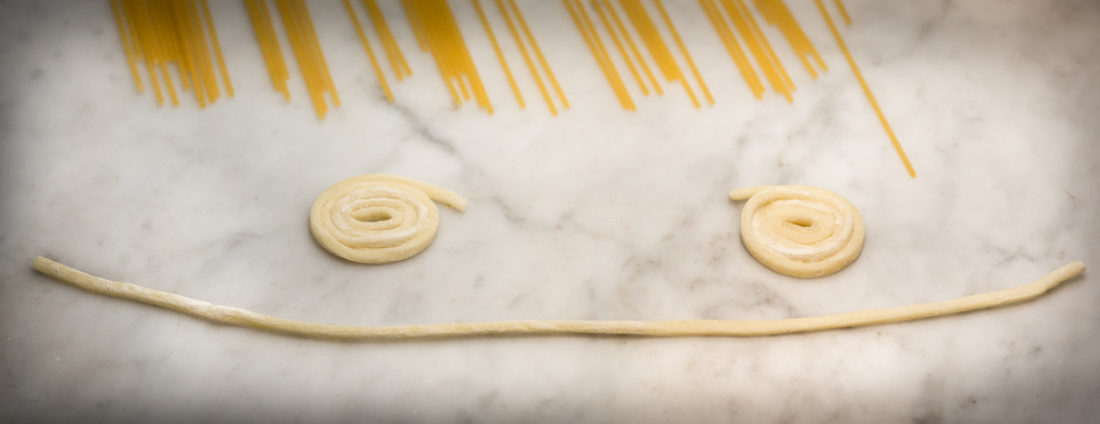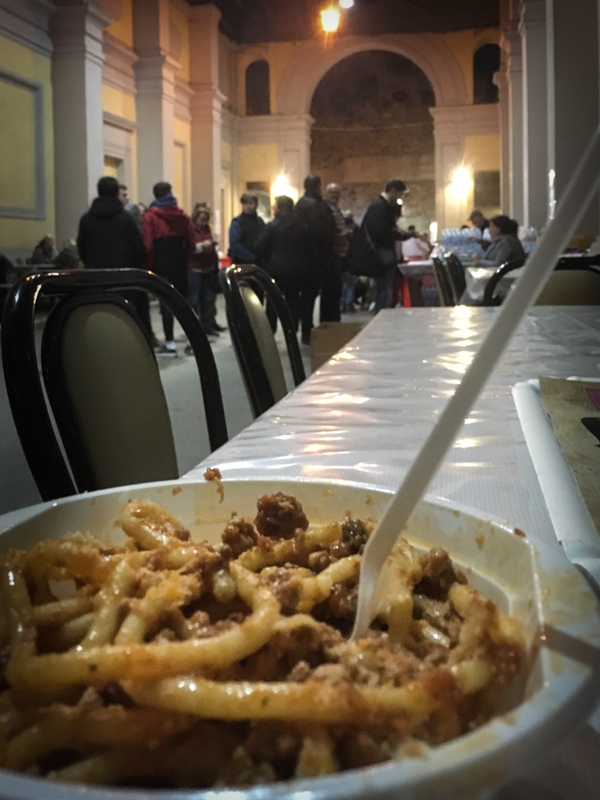
Bringoli: in praise of fat spaghetti
In Italy, it seems as if nearly anything is a possible subject for a celebration—I think it’s part of what makes the culture so joyful. One of the key celebrations around these parts is to honor a really fat spaghetti, called bringoli. And because I am dedicated to deepening your knowledge of pasta, you get to celebrate bringoli too.
I wouldn’t have guessed that fat spaghetti would be highly seasonal, but apparently it is, and late autumn is its moment. November 11, specifically, La Festa di San Martino. Apparently Martin, a Roman soldier, was standing guard one bitterly-cold night in 335 CE, and gave half his cloak to a very underdressed merchant. He spent the rest of the night freezing and hallucinating. In the morning, he promptly converted to Christianity.
I think he’s one of the better saints because there are great feasts in his honor all over Italy, celebrating the new wine, various local cookies, meatballs, and even one for radicchio, up near Venice. But here in the Valtiberina (Valley of the Little Tiber—the headwaters of the famous river), La Festa di San Martino means it’s the time for bringoli.
It’s an unassuming little festival, with several volunteers in one tent cooking bringoli with either a meat or a mushroom sauce, served up in a little plastic bowl. The actual cooking happens behind a kind of screen, which is mysterious. Perhaps it is to protect proprietary village secrets. The volunteers served our two portions with ragu, and were running behind on making the mushroom sauce for our third serving. By the time the mushroom bringoli was ready they decided to replace our original two with hot ones, as pasta is not something you eat cold.
This being Tuscany, there are plenty of open fires—when they grill something, the Tuscans do it over a fire that they’ve burnt down to embers, rather than using charcoal briquettes, and there are elaborate grilling carts to make it possible to keep a fire producing usable coals all evening. Over the flames volunteers roast sausages and toast bread that is rubbed in garlic and drenched in olive oil. (If you take hard, white Tuscan bread and toast it until it gets a little charred over coals, the bread not only gets slightly infused with smoke, but gets a texture not unlike sandpaper, which lets you grate down a half a clove of raw garlic when you rub it into the bread.) Other fire tenders roast chestnuts.

As you sit outside in the cold, huddled over your fat noodles and drinking Vino Novello (Italy’s answer to Beaujolais Nouveau) in an arcade under glowing, buzzing fluorescent lights, Italian village magic happens. Everybody is out and socializing, from a couple of four-year old girls twirling in the middle of the street, who clearly believe they are in charge of the whole event, to the packs of teens aware of every micro-movement of their peers, through to the old men and women, laughing with people they’ve known since childhood.
It’s my daughter’s favorite festival of the year, topping even the polenta and fried bread ones. Her friend, who is now studying in Venice (a good four-hour train ride away), came down for the weekend just for it. “He gets it,” she said. It is a unique time when everyone who appreciates anything good in life gathers together to enjoy local food at its simplest and best. It is also a celebration of community and the heart of our town. It’s rare to see anyone from outside town, but you’re almost guaranteed to see everyone from within.
To make your own, feel free to substitute pici, although they are in no way similar, the locals tell me. Top with a lovely ragu or a porcini mushroom sauce.






No Comments